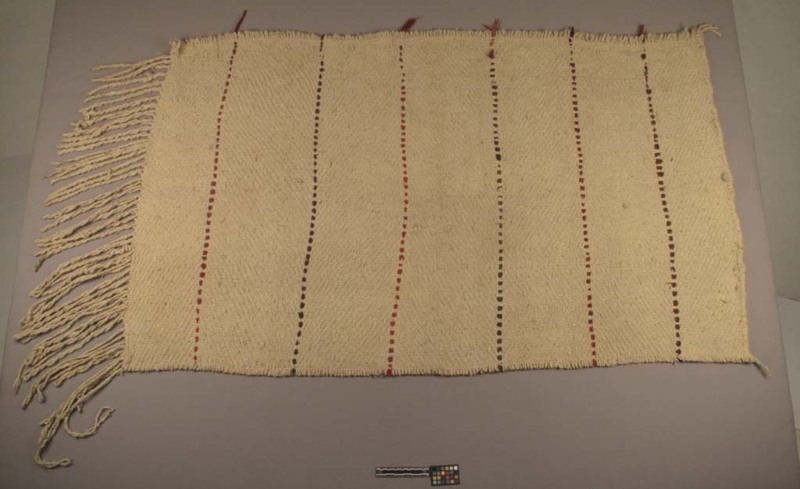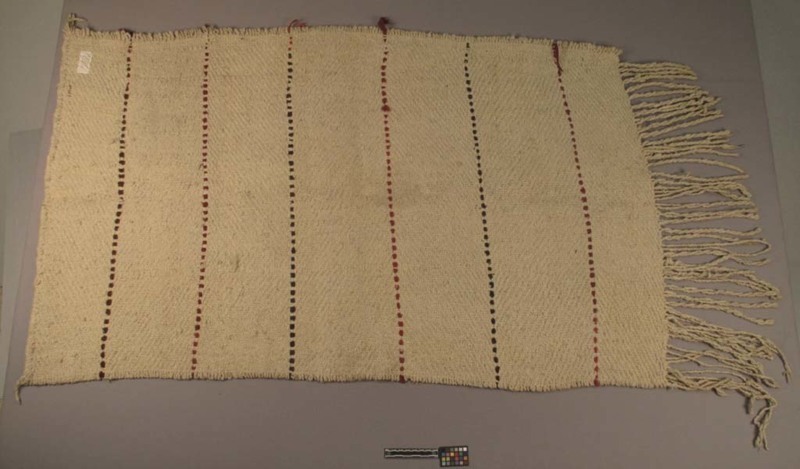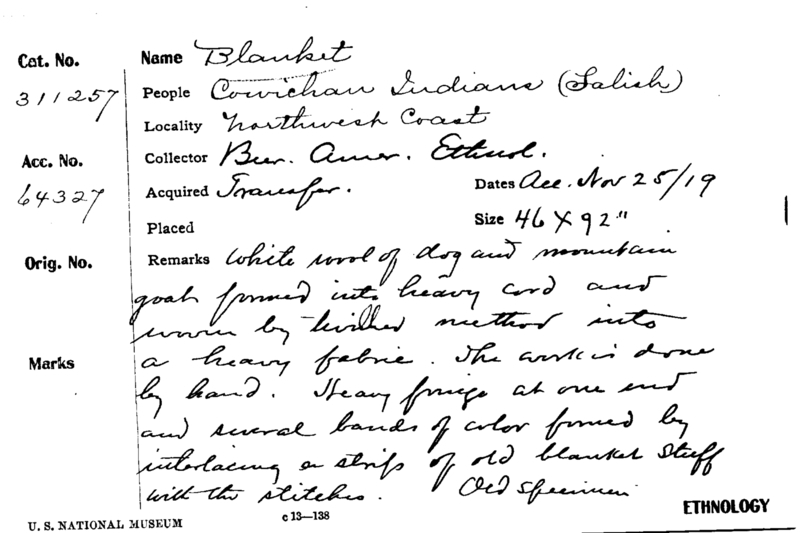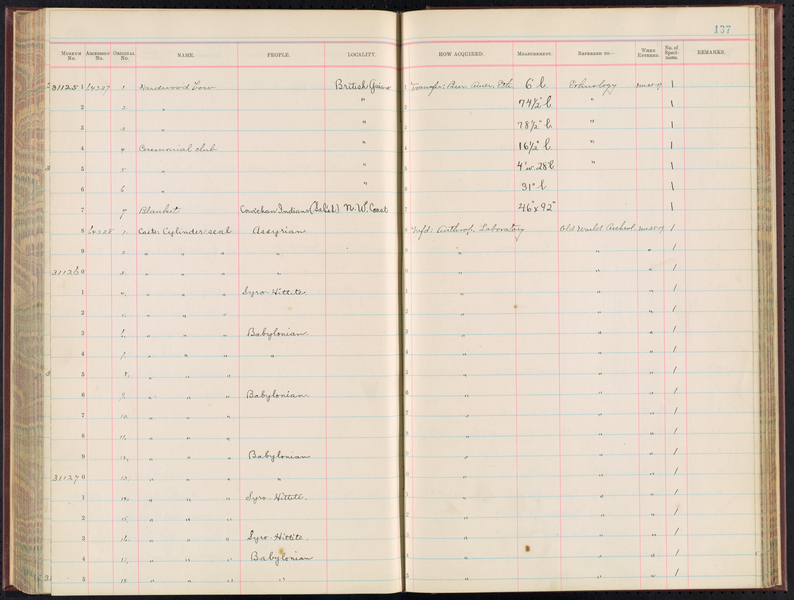Blanket Item Number: E311257-0 from the National Museum of Natural History




Notes
From card: "White wool of dog and mountain goat formed into heavy cord and woven by twilled method into a heavy fabric. The work is done by hand. Heavy fringe at one end and several [six] bands of color formed by interlacing a strip of old [trade] blanket stuff with the stitches. Old specimen."Reference: Solazzo, C., S. Heald, M.W. Ballard, D.A. Ashford, P.T. DePriest, R.J. Koestler, and M. Collins. 2011. Proteomics and Coast Salish blankets: A tale of shaggy dogs? Antiquity 85: 1418-1432. http://antiquity.ac.uk/ant/085/ant0851418.htm . Identified there as a plain twill-woven ceremonial-type blanket of Mountain goat hair (no Salish wool or woolly dog hair was identified).The collector for E311257 is unknown. Reference: Barsh R, Jones J, Suttles W (2002): History, Ethnography, and Archaeology ofthe Coast Salish Woolly-Dog. 1-12. In: Snyder L.M. & Moore, E. A. 2006. Dogs and People in Social, Working, Economic or Symbolic Interaction. Proceeding of the 9th ICAZ Conference, Durham 2002. Oxbow Books, Oxford. See pp. 4-5 where it is noted that "James Teit was the principal collector of British Columbia antiquities for the Smithsonian Institution as well as the American Museum of Natural History in the early 20th century (Teit, J. A. 1930. The Salishan Tribes of the Western Plateaus. Fortyfifth Annual Report of the Bureau of American Ethnology, 1927-28, 23-396. Washington, D.C.). If the Smithsonian acquired E311257 from Teit it could very well have been a product of the Cowichan people who live near Duncan on Vancouver Island. The term "Cowichan" has long been used in the Pacific Northwest as a generic term for all Coast Salish style knitting and weavings, however."
Item History
- Made in British Columbia, Canada
- Collected in British Columbia, Canada
- Received from Bureau Of American Ethnology on November 25, 1919
What
- Name
- Blanket
- Identification Number
- E311257-0
- Type of Item
- blanket
Who
- Culture
- Cowichan
- Received from
- Bureau Of American Ethnology
Where
- Holding Institution
- National Museum of Natural History
- Made in
- British Columbia, Canada
- Collected in
- British Columbia, Canada
When
- Acquisition Date
- on November 25, 1919
Other
- Accession Number
- 064327